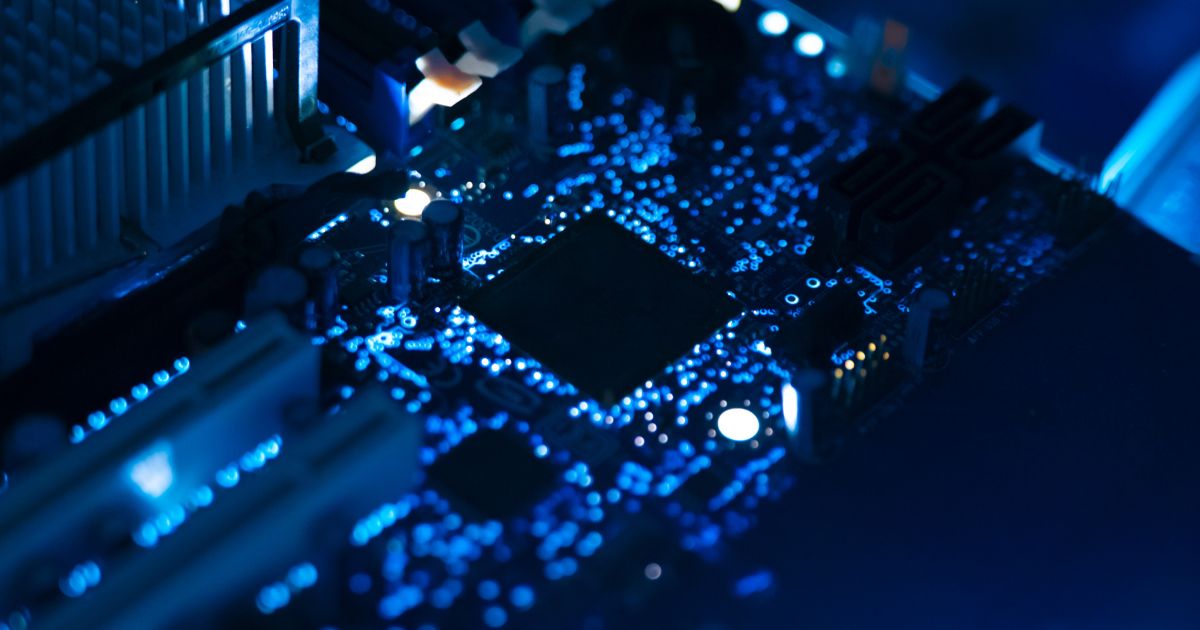Can You Use ChatGPT for PCB Design?

ChatGPT has quickly become the killer app for AI, and it’s made generative AI extremely easy to access and use. So of course we had to ask, can you use ChatGPT for PCB design tasks? Does it provide useful answers or results when doing some technical research? We’ll look at what the system can and can’t do in this article.
In the forthcoming guide, I want to stress that I am just using ChatGPT in its native form (Pro subscription, but no plugins). We’ll do some knowledge tests using the GPT-3.5 and GPT-4 models. Spoiler alert: the system gives mixed results, and the specificity of the results relates directly to the specificity of your questions.
ChatGPT in Your PCB Design Process
First, let’s dig into what ChatGPT in its basic form (models only, no plugins) can do and what it cannot do. If you just get a standard subscription with no models, ChatGPT will be limited to the following tasks:
- Responding to questions in text form
- Generate blocks of code from descriptions of tasks or functions
- Performing basic mathematical calculations involving analytical formulas
- Summarize, paraphrase, or explain complex concepts
- Provide lists of tasks, describe processes, and provide instructions to accomplish tasks
Overall, this makes it a candidate for generating certain blocks of knowledge about PCB design. As of May 2023, a subscription to ChatGPT still does not enable the system to perform any of the following tasks:
- Create design files in your native file format
- Generate images or videos
- Train itself from transcripts of publicly available videos
- Access the internet based on a URL
- Infer engineering requirements by reading your mind
Technically, with some fine-tuning and some plugins, this “can’t do” list might shrink. As new features are added to the platform, this could all change. When we look at the various tasks involved in PCB design, what kinds of tasks could we expect it to accomplish?
The list below should provide some ideas. This is by no means definitive, and the tasks below were chosen to demonstrate the technical knowledge of the system with regard to PCB design. To get a better overview of the tests I ran on ChatGPT, watch the video below:
Results
Several different types of queries were tested in GPT-3.5 and GPT-4. I would like to note that the results in GPT-4 were not necessarily more or less insightful than GPT-3.5, what matters is the technical accuracy and not the depth or composition of the response. With that in mind, let’s look at some of the queries I tested in ChatGPT.
Research Summarization
One task where I think ChatGPT is very useful is as a research summarizer. For example, I sometimes need to get some overview of industry standards as part of a PCB design project, video, or article. For example, I like to use ChatGPT to determine:
- Lists of industry standards in certain areas (EMC, military, automotive, etc.)
- An overview of the contents in certain industry standards
- An overview of interface standards and how they are used
- Certain calculations that might be needed as part of engineering an interconnect or PCB
- Generating formulas that would be needed to calculate something
Code Generation
Another example comes from embedded design and testing.
In the example below, I’m generating a python class for my older LeCroy 9300 oscilloscope so that I can capture data from the device. This was generated using GPT-4; GPT-3.5 was also successful, but it used the pyvisa class as the basis for the generated code. While I have not tested the code below, it does generate code with the correct Python syntax. Make sure you QC any generated code before using it in your system.

High-Level How-To Tasks
This is an area where ChatGPT gives mixed results. In the first set of queries I ran, I found that overgeneralized questions will yield overgeneralized answers. The generated results could be useful for new designers who want to know what they still need to learn, but they are not actionable for an experienced designer and they overgeneralize information across multiple queries.
For example, I queried ChatGPT for guidance on how to design three types of boards:
- High-speed PCBs
- RF PCBs
- High-density PCBs
The results that were generated were practically identical across all three types of boards. The system simply replaced “high-speed PCB” with “RF PCB” and “high-density PCB” when generating the results. The video above shows what happens and the types of highly generalized answers that ChatGPT generates.
This means that the system is overgeneralizing design guidance to areas where it may not apply in realistic situations. If you want to get better guidance on design tasks, then you should make sure you ask much more specific questions. With more specific questions come more specific answers.
Specific Engineering Knowledge
In another iteration, I asked ChatGPT for differential impedance values under various generations of the PCIe standard.
In one instance, I found the stream of answers to be contradictory, which is also shown in the above video. After calling out a contradiction, ChatGPT provided an explanation for the contradiction as shown below.

I think this also illustrates the need for QC when it comes to knowledge generated from any LLM, including ChatGPT. Don’t be afraid to call out apparent contradictions, because they may be easily explainable or totally valid. In other cases, such as a peak AC voltage calculation shown below, the contradictions are just a hallucination or an inability to understand context in a question.
Calculations
It is well-known that ChatGPT can be used for math problems, including some engineering calculations. Engineering calculations that go beyond the typical problems you would find in school and they instead require some deeper understanding and context behind the calculation.
First, I asked ChatGPT to calculate the peak voltage associated with a 115 V AC signal. It is well-known that the 115 V in an AC signal is not the amplitude, but it is the RMS voltage. In 1 out of 4 attempts, ChatGPT mistook the RMS value for the amplitude, and it calculated the wrong voltage given that it did not catch the context of the question.
It’s interesting that the system would be inconsistent like this. We can see this occur again when asked a more complex question about the impedance of a coplanar waveguide. I asked the system to calculate this using GPT-3.5 and GPT-4. In both cases, the answer was incorrect. With GPT-4, which is a more advanced model, the system was even less accurate as it stated the length of the line was needed in order to calculate the impedance.

Recommend Components
I also asked ChatGPT to recommend some components given some broad specifications. The system failed completely in this task. The recommended components were not even close to being correct. For example, when I requested a recommendation for a transimpedance amplifier, it gave recommendations for a power amplifier (HMC994APM5E) and passive mixer (ADL-5812). It also did not provide correct specifications on the recommended parts.

The only instance where the generated response in this category was in any way useful was when I asked if a component aligned with a set of specifications. In this case, the component I wanted ChatGPT to recommend was the OPA855. When I asked if the OPA855 would align with the bandwidth requirement, it responded correctly.

When asked to recommend something simpler like a power regulator, the system also spectacularly failed as shown in the above video. Personally, without some creative prompt engineering, I would not use component recommendations from ChatGPT.
Summary
Overall, I see very mixed results when examining the use of ChatGPT for PCB design, both as an engineering tool, a learning tool, and a research tool.
As a research tool and a learning tool, the system generates technically true statements, but the results are very broad and they are not always actionable. For high level questions, such as “How do I design a high-speed PCB?”, the system gives very over-generalized answers. There is a lot of missing context and often the actionable advice is missing. It does, however, help very much with things like definitions and descriptions of industry standards, both of which could require hours of Googling in order to find concise answers.
- My grade as a research/learning tool: B
As an engineering tool, it does much worse. For very basic questions, like how to calculate peak AC voltage from an RMS AC voltage, the system was correct 75% of the time (albeit this is a small sample size). For more complex tasks, like recommending components that can meet specific operating targets, it failed miserably with the GPT-3.5 and GPT-4 models.
- My grade as an engineering tool: D-
Now that we’ve gotten to this point, just note that you could use plugins with a Pro subscription to improve your ability to generate design ideas and useful guidance in engineering tasks. As of now, I have been spending time doing exactly this, and I’ll make sure to share my experience in this area once I have more definitive guidance.
No matter how you use ChatGPT for PCB design, you’ll still need the best design tools in order to create products that are functional and manufacturable. As more AI tools make their way into PCB design, Altium will be here with the best PCB design software to help you succeed.










